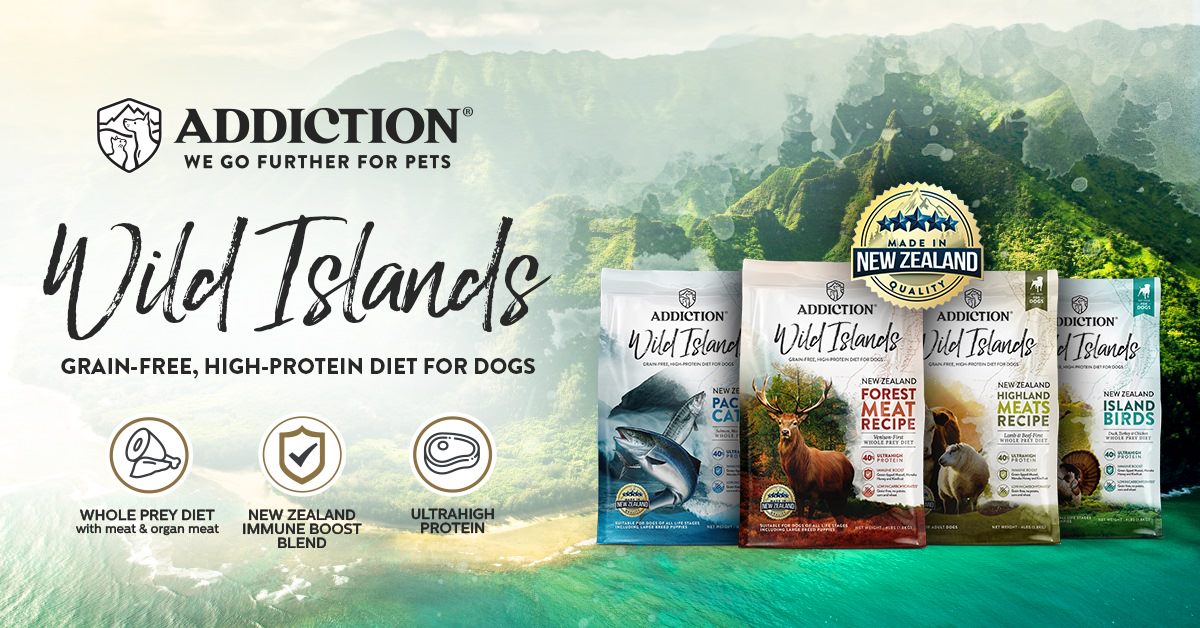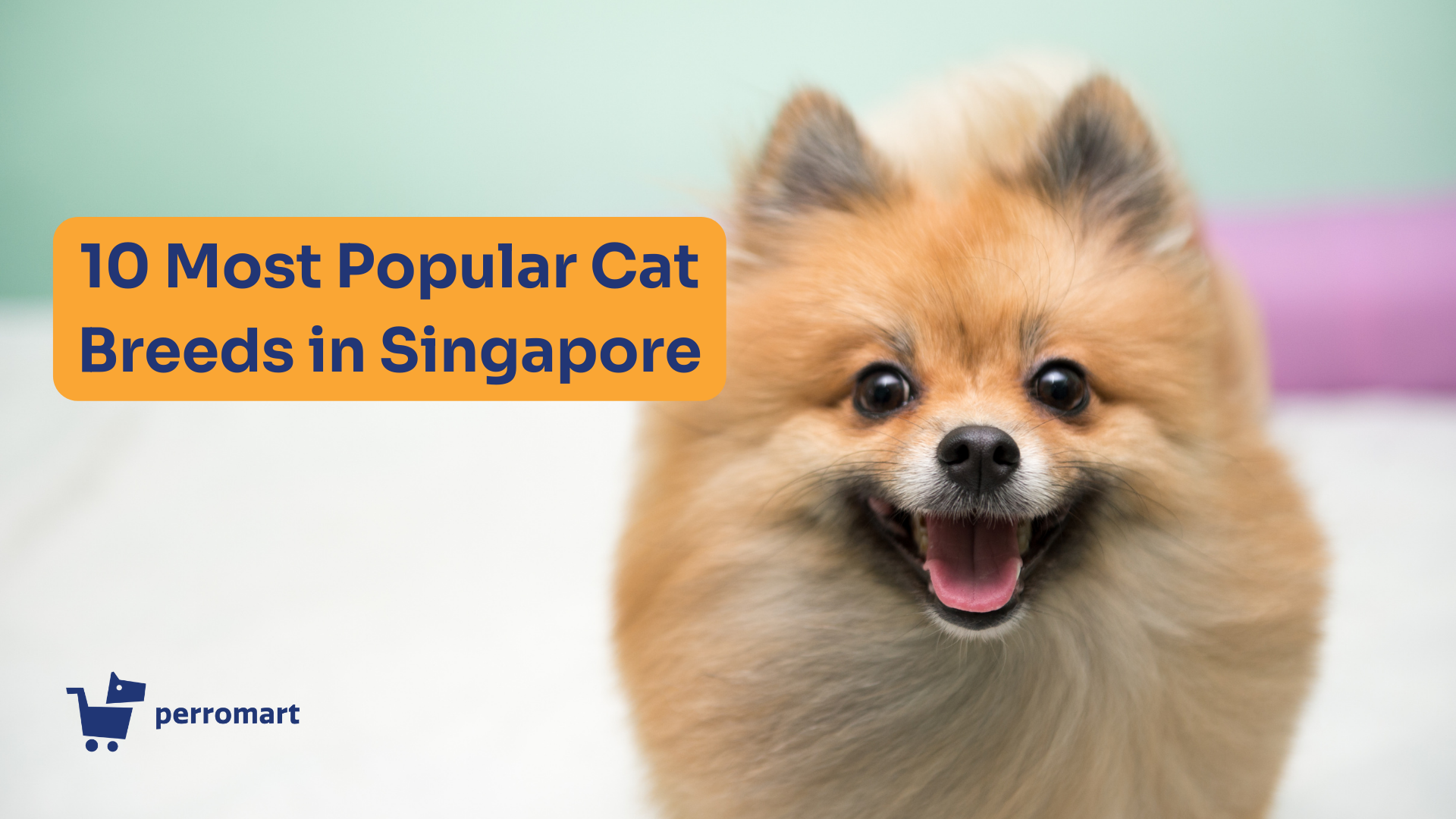10 Most Popular Dog Breeds in Singapore
It’s not out of the norm to point out that your dog could be the most popular in the world. But what do the statistics say about Singapore’s most popular dog breeds? If you are curious about Singapore’s most popular dog breeds, then you’re in the right place! The statistics for registrations of purebred puppies and mixed breeds for the previous year have just been released, giving us a good indication of what the most popular breeds will be this year. Let’s find out which breeds take the top spots: 1.Shih Tzu The Shih Tzu is a dog breed best known for its short snout and large round eyes. The name Shih Tzu means “little lion.” Although they look fierce, this dog has nothing to be afraid of. They have a playful personality with a calm and friendly temperament. You can adopt one since HDB approves them. Incredible Facts Shih Tzus originated from Tibet, not China. They were bred from the Lhasa Apso and the Pekingese. Shih Tzus are also called Chrysanthemum dogs because their hair grows all over their face and nose. Unlike other dogs with a longer snout, Shi Tzus have flat-shaped faces that make them more prone to heat stroke since the air inhaled is not efficiently cooled. Shih Tzus looks like Ewoks from Star Wars, which is pretty incredible 2.Golden Retriever The Golden Retriever is a Scottish retriever breed characterized by a gentle and affectionate nature and a unique golden coat. It’s a frequent competitor in obedience trials and dog shows. The Golden Retriever may also be used as a gun dog and may be trained as a guide dog. Incredible Facts The Golden Retrievers are hard-working since they are used for everything from tracking and hunting to rescue and service dog work. They are normally used as therapy dogs to soothe and calm people since they seem to have reserves of empathy and unconditional love. Golden retrievers love to eat anything, from the food in their bowl to papers, crayons, and toys. They perform exceptionally in dog sports like dock diving, agility, obedience, and more. 3.The Maltese The Maltese are a breed of dog generally associated with the island of Malta. The modern variety of Maltese has a silky-pure white coat with hanging ears and a tail curving over its back. They don’t normally shed too much despite the amount of fur they seem to have. Maltese are gentle, fearless, and love to be around people. Incredible Facts The Maltese are very intelligent and lively, which is why they are often described as charming hams. They are extremely alert dogs, making them excellent watchdogs. They can spring into action if they perceive a threat to their humans. The Maltese enjoy competitive sports like agility and obedience. 4.Jack Russell Terrier Jack Russell Terrier has been a favorite breed for families for a long period, especially with their small size and playful nature. It’s a highly energetic breed that relies on a high level of exercise and stimulation. It’s predominantly white in coloration with black or brown and tan markings. These dogs exhibit either a rough or smooth skin types, or a combination of both. Incredible Facts Jack Russell Terriers are very intelligent dogs with a strong drive to explore the world around them. They are very active dogs since they are bred to be curious, fast, and agile with lots of stamina as hunting dogs. Jack Russell Terriers are regular divas who love to have everyone’s attention all for themselves. They need regular grooming since they shed a lot. 5.Miniature Schnauzer The Miniature Schnauzer is a medium-sized dog thought to have been developed from the smallest specimens of the Standard Schnauzer. They have excellent guarding tendencies with no predisposition to bite. Miniature Schnauzers come in four color variations: black and silver, solid black, salt and paper, and white. Incredible Facts Miniature Schnauzers shed very little. They excel at many dog sports, including Earthdog, barn hunt, rally, obedience, and agility. They are extremely intelligent, so teaching them a trick is a breeze. 6.Chihuahua The Chihuahua is one of the world’s smallest dog breeds. It comes in any color combination, from solid to marked or splashed. This unique breed is named after the Mexican state of Chihuahua and is normally kept as a companion dog or for show. The Chihuahuas also make great watchdogs since they are extremely suspicious of strangers like the Pomeranian. Incredible Facts There are both short-hair and long-hair Chihuahuas. The short-haired ones shed year-round, while the long-haired ones shed only twice yearly. They are more vulnerable to phobias, such as separation anxiety and fear of crowds or traffic. They are the second most euthanized breed after the Pitbull. 7.Poodle The Poodle is a water dog breed divided into four categories depending on their size: The Toy Poodle, Miniature Poodle, Medium Poodle, and Standard Poodle. You should get yourself a Poodle if you are someone who loves to cuddle. These dogs are affectionate and smart. They also look adorable and may even get lost in a pile of cute toys since they all bear a striking resemblance. Incredible Facts Poodles were originally bred as water retrievers, which is why they are named after their ability to splash in the water. Poodles first originated in Germany, although it’s the national dog of France. They are highly active dogs regardless of their sizes. A team of Poodles once competed in the Iditarod Trail Sled Dog Race. 8.Labrador Retriever The Labrador Retriever dog is a breed of retriever gun dog that is very popular in Singapore and all over the world, especially in Canada and the United States. The Labradors are famed for their pleasant nature, loyalty, and helpful disposition. Some are adopted as family pets, but most work as search-and-rescue, fishing, hunting, and service dogs. You might see most Labradors in police camps, army camps, and the Customs as they’re among the breeds protecting our countries. Incredible Facts The Labradors love water. Initially, they helped fishers fetch nets or retrieve fish from the icy sea. The Labradors are practically waterproof. The Labrador Retrievers nearly went extinct in the 1980s, before it gained fame. 9.Pomeranian The Pomeranian, commonly known as “Pom Pom,” is one of the most popular choices for a family pet. It’s classified as a toy breed because of its small size. They are petite and cute, which is why they have been made popular by many royal owners since the 18th century. They make incredible guard dogs since they are always suspicious of strangers and bark a lot. Incredible Facts Many Pom Poms change color as they age. Queen Victoria made Pomeranians popular since she owned a particularly small Pom Pom. Teddy Roosevelt, the 26th president of the United States, also owned a Pomeranian. One Pomeranian is a social media sensation. He goes by the handle @buddyboowaggytails. 10. Mixed Breeds (Mongrels) A mongrel, or simply a mixed-breed dog, is a breed that does not belong to any officially recognized group. These dogs are loved as much as other breeds and are usually rescued by animal shelters. You will see them roaming around and minding their businesses anywhere from your void deck to the coffee shop. Incredible Facts Mixed breeds come in various colors, types, sizes, and physical characteristics, making it harder to describe them. They have longer lifespans and are typically low-maintenance dogs. With proper training and care, mixed-breed dogs can also be good family and pets. Tracing their ancestry is difficult since they descend from parents of multiple breeds. Product Recommendations Grain-free pet food is just what its name describes- pet food made free of grains. There is a chance you may come across shoppers scanning labels at any pet store to ensure their pet’s food is free of one thing or another- fat-free, gluten-free, sugar-free… the list grows longer each day. Common grain-free pet food includes: 1. Heka Grain-Free Salmon, Potatoes & Peas Dog Dry Food With Heka, all dogs of all sizes can experience the power of nature! Heka is highly palatable and is more suitable for dogs with food sensitivities. It’s also appropriate for dogs with inflammatory bowel disease. 2. Absolute Holistic Grain Free Salmon & Peas Dog Dry Food Absolute Holistic is made with real meat as the first ingredient, followed by veggies, fruits, and other superfoods. Besides, it’s also been formulated with adequate proteins, vitamins, and antioxidants your dog needs to thrive. 3. Taste Of The Wild Pacific Stream with Smoked Salmon Dog Dry Food Taste of the Wild Pacific Stream boasts a grain-free formula made with sweet potatoes and real smoked salmon, providing highly digestible energy for your sensitive dog. It also provides an optimal amino acid profile and naturally sourced antioxidants. 4. Nutripe Essence Australian Pork with Green Tripe Dog Food Nutripe Essence Australian Pork is a scientist-formulated, Australian-made dog food rich in antioxidants, fruits, and vegetables that helps boost the immune system. It’s also good for your dog’s gut health since it contains extra enzymes, probiotics, and prebiotics. 5. ORIJEN Six Fish Dog Dry Food ORIJEN is a biologically appropriate diet that is rich in whole animal ingredients. The first five ingredients are raw fish, which includes rockfish, flounder, hake, mackerel, and sole. ORIJEN is coated with freeze-dried liver for a taste your dog instinctively craves. 6. Addiction Grain Free Salmon Bleu Dog Dry Food Addiction Grain Free Salmon Bleu is a hypoallergenic formula with low allergy-causing ingredients. It uses New Zealand King Salmon as the star ingredient paired with wholesome fruits and vegetables. This formula helps promote your dog’s coat and skin health since it’s rich in Omega-3 fatty acids from Salmon and Flaxseed.













